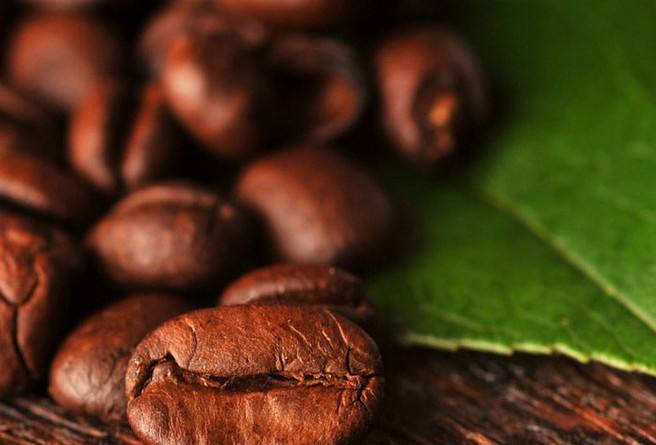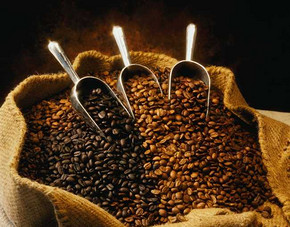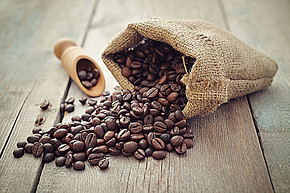When was the coffee explosion in Rwanda?
Follow the caf é (Wechat official account vdailycom) and found that Beautiful Cafe opened a small shop of its own.
The first explosion stage (before the end of the first explosion): 15-18 minutes, 180-210 °C. after the first explosion, the coffee bean will begin to give back the "just right heat" you gave it, showing a perfect exothermic reaction, and then we can obviously smell that the aroma of coffee will change from grass to coffee coke, and with the progress of the first explosion, the coffee beans will burst and expand. From now on until the coffee is charred, basically all the coffee can be drunk, and there will be no taste of grass, but the coffee at the beginning of the explosion will be very sour and not bitter. With the passage of time, the taste of coffee will turn into non-sour and extremely bitter. Generally speaking, the bean point will be determined by the flavor of the coffee itself. When the sour taste is fast and the bitter taste is about to appear, this is usually the bean spot in the mother's mouth. At this time, the coffee under the bean will reach its peak, and the aroma will be optimized. This point depends on the "flavor" of the coffee itself. due to the different growing environment, climate, soil and moisture, the "flavor" of the coffee will be slightly different. Mother's mouth will help you check in this link, keep this point within our SOP and keep it stable.
Second explosion stage: 18-20 mins-210 °C-lower beans After the first burst, the coffee bean will slowly mature and emit a charming aroma, and when the heat absorption reaches the second peak again, the coffee bean will have a second explosion, that is, the so-called second explosion, which will open a space in the heart of the epidermis, and the carbon dioxide in the coffee bean will continue to be discharged, causing the internal temperature to rise continuously, start coking, turn into oil, and ooze out of the coffee surface. At this time, the coffee flavor will be bitter, strong flavor, usually Starbucks is baked to this stage, and then continue, the coffee beans will slowly turn into coke, except bitterness without any flavor? This kind of coffee is lifeless, and this is a perfect performance of coffee beans.

And when the second explosion is completed, different baking conditions are completed: shallow baking (primary explosion), moderate baking (between primary explosion and secondary explosion), and heavy baking (secondary explosion).
The roasting situation is different from that of different coffees, so there is no best roasting situation, so you need to "prescribe the right medicine " according to the coffee beans.
Rwanda, located in the southern equator of central Africa, is a landlocked country, bordered by Tanzania to the east, Burundi to the south, the Democratic Republic of the Congo to the west and Uganda to the north. The territory is mountainous, known as "the country of a thousand hills". The divide between the Congo River and the Nile River runs through western Luanda from north to south.
Rwanda's economy is dominated by agriculture. The population engaged in agriculture and animal husbandry accounts for 92% of the country's population. The main cash crops are coffee, tea and cotton. Because it is an agricultural and animal husbandry country, coupled with the loss of many young workers caused by the genocide in 1994, it is a huge blow to a country that is not already rich, and Rwanda is still a backward country. After the civil war, Rwanda has intensified its development in the cultivation and trade of coffee. In recent years, the Rwandan government has also taken positive measures to set up coffee production cooperatives in various places to give technical guidance and financial support to farmers. It is expected that the domestic economic development can be promoted to a certain extent through the coffee industry. Because of the excellent performance of Rwandan coffee in recent years, it is becoming more and more popular in the international market.
Rwanda has been growing coffee since colonial times. Although the crops are mainly coffee, the quality of coffee produced in Rwanda is not outstanding, and its status in the coffee world is low, and few people pay attention to it. Most of the coffee varieties grown in Rwanda are bourbon. Rwanda, known as the "country of a thousand hills", has a high-altitude mountain environment, fertile volcanic soil and abundant precipitation, and has a climate conducive to the growth of coffee trees. The advantages of varieties and excellent natural conditions should have produced high-quality coffee, but why the quality of its coffee performance is not satisfactory? The reason lies in the later stage of processing. Improper handling will reduce the quality of coffee and sacrifice a lot of good flavor in vain. Harvesting, planting, treatment, grading, transportation and other links will directly affect the quality of raw coffee beans, in which the lack of control in a certain link will become a stumbling block to good coffee.
The coffee fruit needs to be transported to the processing plant as soon as possible after picking, but due to the lack of domestic facilities, it is unable to deal with the fruit at the first time. The fruits are piled up after being picked, which will continue to develop and accelerate mildew and decay due to lack of ventilation. Rotten fruits will affect the quality of coffee and show defective flavor.
In recent years, Rwanda has made great progress in the production and processing of coffee. First of all, coffee fruits are picked manually; coffee production cooperatives are set up all over the country to provide technical guidance to coffee farmers; coffee farmers send them to coffee processing stations for cleaning and screening as soon as possible after picking, and select mature and high-quality coffee fruits for processing.
Important Notice :
前街咖啡 FrontStreet Coffee has moved to new addredd:
FrontStreet Coffee Address: 315,Donghua East Road,GuangZhou
Tel:020 38364473
- Prev

Description of flavor of Rwanda bourbon coffee
Following Cafe Review (Wechat official account vdailycom) found that Beautiful Cafe opened its own shop, Rwanda bourbon Coffee. The taste of Rwandan coffee is described as grass aroma, with tropical climate characteristics, this coffee presents a sweet fruit flavor, it also gives people a feeling of freshness, clearness, and freshness. Bourbon grown in Rwanda
- Next

What are the characteristics of coffee in Rwanda
Following Kaiping (official Wechat account vdailycom) found that the coffee harvest season for coffee fruits at the beautiful cafe opened its own shop is during the main rainy season in the area, from March to the end of May. During the harvest season, farmers spend most of their day picking coffee fruits by hand. In the afternoon, the farmer held the coffee fruit in a traditional basket made of banana leaves.
Related
- Detailed explanation of Jadeite planting Land in Panamanian Jadeite Manor introduction to the grading system of Jadeite competitive bidding, Red bid, Green bid and Rose Summer
- Story of Coffee planting in Brenka region of Costa Rica Stonehenge Manor anaerobic heavy honey treatment of flavor mouth
- What's on the barrel of Blue Mountain Coffee beans?
- Can American coffee also pull flowers? How to use hot American style to pull out a good-looking pattern?
- Can you make a cold extract with coffee beans? What is the right proportion for cold-extracted coffee formula?
- Indonesian PWN Gold Mandrine Coffee Origin Features Flavor How to Chong? Mandolin coffee is American.
- A brief introduction to the flavor characteristics of Brazilian yellow bourbon coffee beans
- What is the effect of different water quality on the flavor of cold-extracted coffee? What kind of water is best for brewing coffee?
- Why do you think of Rose Summer whenever you mention Panamanian coffee?
- Introduction to the characteristics of authentic blue mountain coffee bean producing areas? What is the CIB Coffee Authority in Jamaica?

